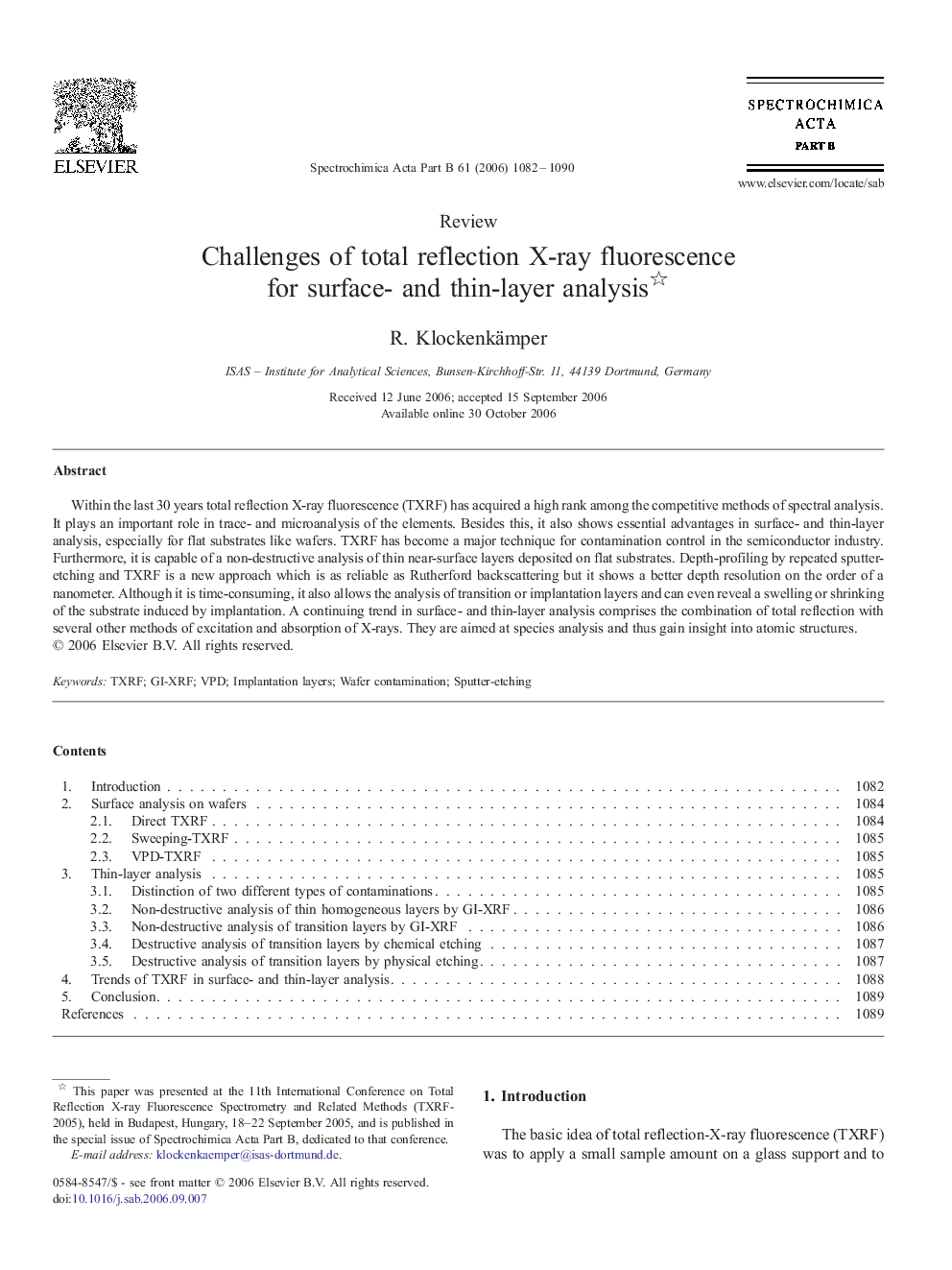| Article ID | Journal | Published Year | Pages | File Type |
|---|---|---|---|---|
| 1240837 | Spectrochimica Acta Part B: Atomic Spectroscopy | 2006 | 9 Pages |
Within the last 30 years total reflection X-ray fluorescence (TXRF) has acquired a high rank among the competitive methods of spectral analysis. It plays an important role in trace- and microanalysis of the elements. Besides this, it also shows essential advantages in surface- and thin-layer analysis, especially for flat substrates like wafers. TXRF has become a major technique for contamination control in the semiconductor industry. Furthermore, it is capable of a non-destructive analysis of thin near-surface layers deposited on flat substrates. Depth-profiling by repeated sputter-etching and TXRF is a new approach which is as reliable as Rutherford backscattering but it shows a better depth resolution on the order of a nanometer. Although it is time-consuming, it also allows the analysis of transition or implantation layers and can even reveal a swelling or shrinking of the substrate induced by implantation. A continuing trend in surface- and thin-layer analysis comprises the combination of total reflection with several other methods of excitation and absorption of X-rays. They are aimed at species analysis and thus gain insight into atomic structures.
